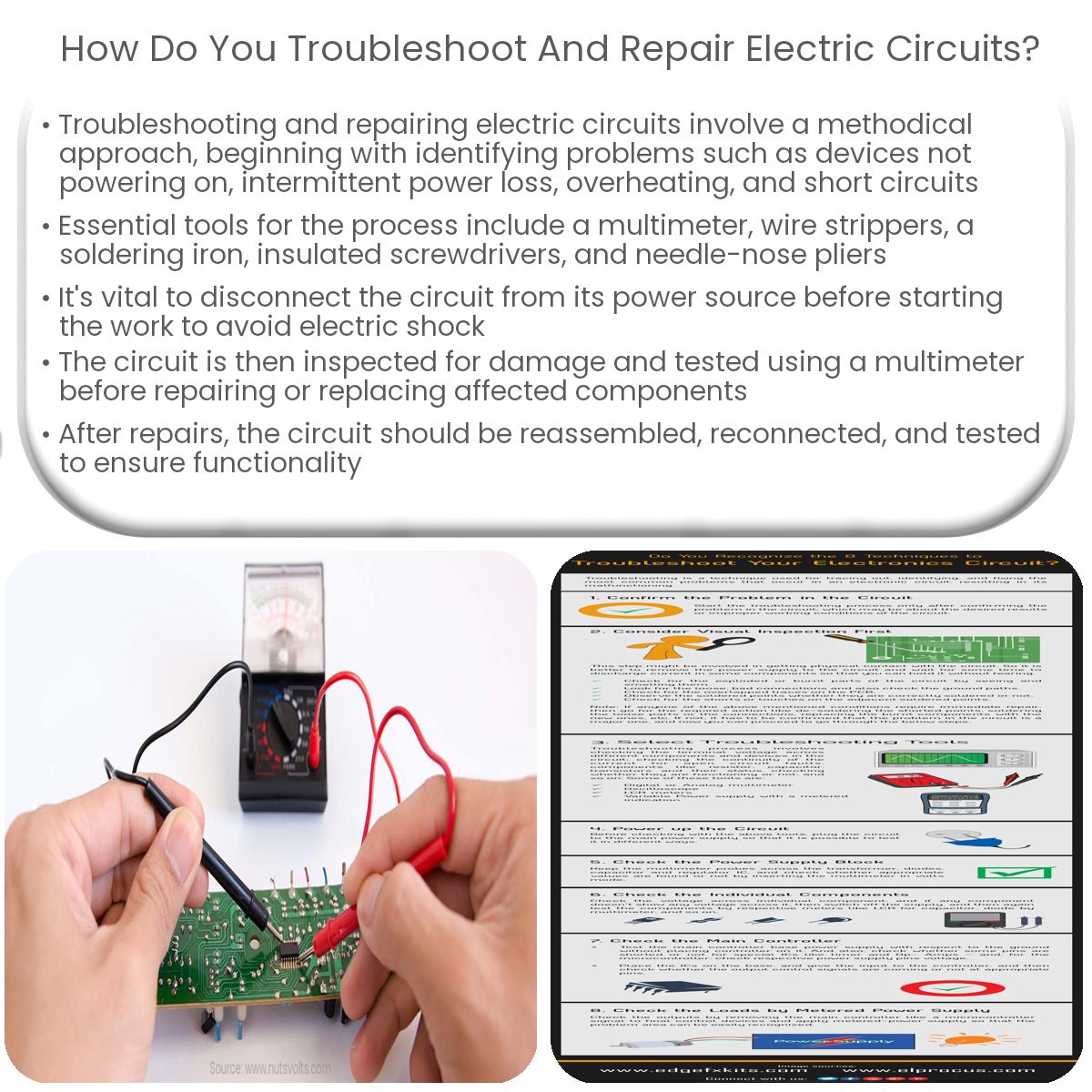Troubleshooting and repairing these circuits is an essential skill for any technician or DIY enthusiast. In this article, we’ll explore the key steps to identify and resolve issues in electric circuits.
Troubleshooting and Repairing Electric Circuits: A Step-by-Step Guide
Electric circuits are the backbone of modern technology, powering everything from home appliances to industrial machinery. Troubleshooting and repairing these circuits is an essential skill for any technician or DIY enthusiast. In this article, we’ll explore the key steps to identify and resolve issues in electric circuits.
1. Identify the Problem
Before diving into the repair process, it’s crucial to pinpoint the issue. Common symptoms of a faulty circuit include:
- Devices not powering on
- Intermittent power loss
- Overheating
- Short circuits
2. Gather Tools and Equipment
Having the right tools and equipment is essential for a successful repair. Commonly used tools include:
- Multimeter
- Wire strippers
- Soldering iron
- Insulated screwdrivers
- Needle-nose pliers
3. Disconnect Power
Always ensure that the circuit is disconnected from its power source before beginning any work to avoid the risk of electric shock.
4. Inspect the Circuit
Perform a visual inspection of the circuit, looking for any signs of damage or wear. This may include:
- Broken or frayed wires
- Corroded connections
- Burnt components
- Cracked or damaged circuit boards
5. Test Components and Connections
Use a multimeter to test components and connections within the circuit, checking for:
- Continuity
- Resistance
- Voltage
Make note of any discrepancies, as these may indicate the source of the problem.
6. Repair or Replace Damaged Components
Depending on the issue, you may need to either repair or replace the affected components. This may involve soldering new connections, replacing wires, or swapping out faulty parts.
7. Reassemble and Test the Circuit
Once the necessary repairs have been made, reassemble the circuit and reconnect it to the power source. Test the circuit to ensure that it is functioning correctly, and that the issue has been resolved.
In conclusion, troubleshooting and repairing electric circuits requires a methodical approach to identify and resolve issues. By following these steps, you can ensure that your circuits remain in optimal working condition.


